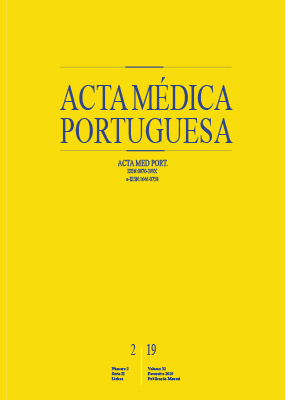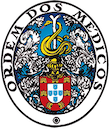Reações Anafiláticas no Serviço de Urgência de um Hospital Terciário Português: Caracterização Clínica e Notificação
DOI:
https://doi.org/10.20344/amp.10820Palavras-chave:
Anafilaxia/epidemiologia, Anafilaxia/etiologia, Serviço de Urgência HospitalarResumo
Introdução: A anafilaxia é significativamente subdiagnosticada e o conhecimento médico acerca da mesma é precário. Pretende-se caracterizar a população de doentes e a abordagem clínica da anafilaxia no Serviço de Urgência.
Material e Métodos: Estudo retrospetivo da população adulta que recorreu ao Serviço de Urgência de um hospital terciário português durante um ano, com anafilaxia. Os dados foram obtidos dos registos clínicos de cada paciente e anonimizados. Um questionário para avaliar conhecimentos sobre notificação de reações anafiláticas foi aplicado aos médicos do Serviço de Urgência.
Resultados: O estudo incluiu 69 doentes. Os sintomas cutâneos (97%) e respiratórios (80%) foram os mais prevalentes; 22% apresentaram-se com choque ou sintomas associados. Não se registaram reações bifásicas ou óbitos. O alergénio provável foi identificado em 73%; maioritariamente foram alimentos; 12% das reações foram com um alergénio previamente conhecido. Adrenalina foi administrada em 15%; 36% foram encaminhados para Imunoalergologia; 10% receberam ou já possuíam adrenalina autoinjetável. Em 70% dos casos, menos de metade dos seis parâmetros das Normas de Orientação Clínica foram cumpridos. Apenas 13% dos médicos sabia que era obrigatório registar todos os casos no Catálogo Português de Alergias e Outras Reações Adversas e apenas 4% sabiam como fazê-lo; relativamente à notificação das reações a fármacos à Autoridade Nacional do Medicamento e Produtos de Saúde, I.P., obtiveram-se resultados ligeiramente melhores.
Discussão: Muitos doentes recorrem ao Serviço de Urgência com reações anafiláticas e a sua abordagem não está em concordância com as normas de orientação clínica nacionais.
Conclusão: É necessário implementar ações de formação relativamente à abordagem clínica e notificação da anafilaxia.
Downloads
Downloads
Publicado
Como Citar
Edição
Secção
Licença
Todos os artigos publicados na AMP são de acesso aberto e cumprem os requisitos das agências de financiamento ou instituições académicas. Relativamente à utilização por terceiros a AMP rege-se pelos termos da licença Creative Commons ‘Atribuição – Uso Não-Comercial – (CC-BY-NC)’.
É da responsabilidade do autor obter permissão para reproduzir figuras, tabelas, etc., de outras publicações. Após a aceitação de um artigo, os autores serão convidados a preencher uma “Declaração de Responsabilidade Autoral e Partilha de Direitos de Autor “(http://www.actamedicaportuguesa.com/info/AMP-NormasPublicacao.pdf) e a “Declaração de Potenciais Conflitos de Interesse” (http://www.icmje.org/conflicts-of-interest) do ICMJE. Será enviado um e-mail ao autor correspondente, confirmando a receção do manuscrito.
Após a publicação, os autores ficam autorizados a disponibilizar os seus artigos em repositórios das suas instituições de origem, desde que mencionem sempre onde foram publicados e de acordo com a licença Creative Commons









